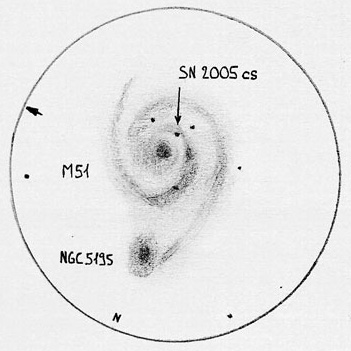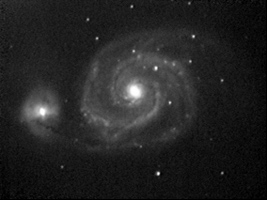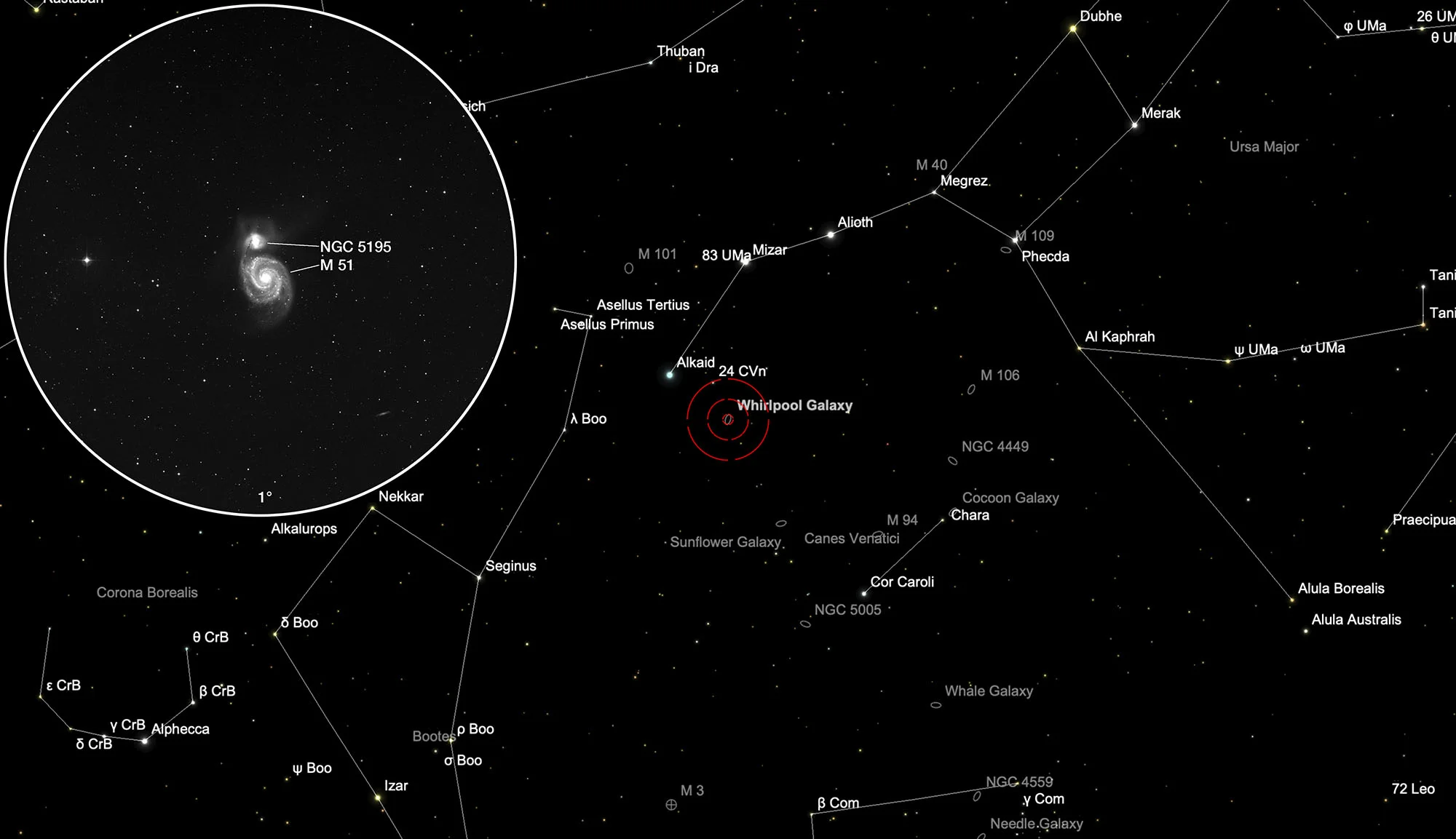Whirlpool Galaxy (Messier 51)




History
The well-known Whirlpool Galaxy was discovered by Charles Messier on 13 October 1773 while observing the comet of the same year. He noted: «Very faint nebula, without stars. [...] It can only be seen with difficulty with an ordinary telescope of 3 1/2 feet [focal length]: near it is a star of the 8th magnitude. [...] It is double, each having a brilliant centre, distant from each other by 4' 35". The two atmospheres are touching. One is weaker than the other.» [281]
The fascinating spiral shape was first noticed in 1845 by Lord Rosse in his huge 6-foot reflector in Paronstown, Ireland. Initially it was assumed that these spiral nebulae were new forming planetary systems, but this was refuted by Edwin Hubble in 1923. [4]
In Halton Arp's 1966 Atlas of Peculiar Galaxies, the two interacting galaxies can be found under Arp 85. He noted: «Faint plumes and extensions from companion.» [199]
Physical Properties
Measured distances from M 51 range from 6.2 Mpc to 8.4 Mpc (20 to 27 million light years). The small companion galaxy NGC 5195 is at the same distance, slightly behind.[145]
| Name | RA | Dec | Type | bMag | vMag | B-V | SB | Dim | PA | z | D(z) | MD | Dreyer Description | Identification, Remarks |
|---|---|---|---|---|---|---|---|---|---|---|---|---|---|---|
| NGC 5194 | 13 29 52.6 | +47 11 44 | Gx (Sbc) | 9.0 | 8.4 | 0.6 | 12.9 | 11.2 × 6.9 | 7 | 0.001544 | 6.52 | 8.600 | !!!, Great Spiral neb | h 1622; GC 3572; M 51; UGC 8493; MCG 8-25-12; IRAS 13277+4727; KCPG 379A; CGCG 246-8; Arp 85; VV 1; VV 403; Whirlpool galaxy |
| NGC 5195 | 13 29 59.2 | +47 16 03 | Gx (SB0-a) | 10.5 | 9.6 | 0.9 | 13.0 | 5.9 × 4.6 | 79 | 0.001551 | 6.55 | 8.600 | B, pS, lE, vgbM, inv in M 51 | WH I 186; h 1623; GC 3574; UGC 8494; MCG 8-25-14; CGCG 246-9; IRAS 13278+4731; KCPG 379B; Arp 85; VV 1; Whirlpool galaxy |
Finder Chart
The Whirlpool galaxy is located in the constellation Canes Venatici, below and at right angles to the two rear tiller stars in the Big Dipper. The galaxies are best observed from December to September.
Visual Observation

350 mm Aperture: The spiral arms are clearly visible in medium-sized amateur telescopes. Two arms spiral around the light and large core. One spiral arm connects M51 at least optically with the smaller galaxy NGC 5195. It seldom happens that a supernova in a galaxy flashes brightly enough. But it was time again that a star exploded completely and we can observe this from Earth. Though 30 million years later, that is how long it took for light from the galaxy M51 to reach us. The discovery of a supernova is one of the few ways in which amateur astronomers can make a name and contribute to science. This is what happened on 27 June 2005. The amateur astronomer Wolfgang Kloehr was the first to photograph or discover the supernova with relatively simple equipment, Meade 8 "Schmidt-Newton telescope on LXD-75 and deep-sky imager. — 14" PWO-Dobson, F:4.6 / TV-Radian 8mm, 200x, 0.3°, Eduard von Bergen
400 mm Aperture: The galaxy pair was at best viewing conditions near zenith. Spiral structure is impressive and was best visible with 11 mm Delite Eyepiece (163x). A must see when it is highest in the sky. — Taurus T400 f/4.5 Dobsonian, Glaubenberg Langis, 28 February 2022, Bernd Nies

762 mm Aperture: The visual impression can be reproduced with a MallinCam video camera and an integration time of around three seconds. A tracking 30 inch f/3.3 SlipStream Dobsonian was used. The resulting image comes very close to visual vision with a 13 mm Tele Vue Ethos eyepiece. — 14. 3. 2012, Eduard von Bergen
